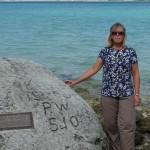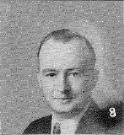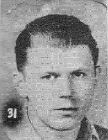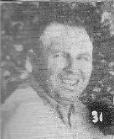The Wake 98
 Every few weeks I write a post to highlight the ongoing mission of the Joint POW-MIA Accounting Command (JPAC) to locate family members of the 98 men massacred on Wake Island in 1943 for possible DNA matches. For more information, see my November 2012 post on the JPAC Mission. This week I want to talk about the nearly 100 men who drew their last breath on the north beach of Wake, October 7, 1943.
Every few weeks I write a post to highlight the ongoing mission of the Joint POW-MIA Accounting Command (JPAC) to locate family members of the 98 men massacred on Wake Island in 1943 for possible DNA matches. For more information, see my November 2012 post on the JPAC Mission. This week I want to talk about the nearly 100 men who drew their last breath on the north beach of Wake, October 7, 1943.
When the Tachibana Maru pulled away from Wake Island on September 30, 1942, it sailed for Japan carrying 265 American civilian prisoners of war – the last to leave Wake alive. As with the larger contingent that left the previous January, a flurry of last-minute identity switches preceded the ship’s departure.
For nine long months, since the capture of the atoll on December 23, 1941, time had dragged by for the several hundred American prisoners who remained on Japanese-occupied Wake. Many a bet had been won or lost on when the expected rescue or repatriation would occur. In late September the sudden announcement of departure for the majority stirred the American camp to a fever pitch. The prisoners had no reason to expect that life would be any better or worse under the Japanese on Wake or off it, but some were eager for change – any change. Others balked at the impending separation from family or friends.
A father and son pair, Charles and Leroy Myers, who together had operated the big crane on Wake for the contractors in 1941, found themselves on different rosters. Survivor Leroy Myers recalls that they protested, “Look, we don’t care whether we stay or go, just so long as we can be together.” At the last minute, crane oiler Joe Mittendorf agreed to switch with Leroy and the Myers pair departed together. Another survivor, John Wiggenhorn, recalled switching with Louis Cormier, secretary and editor of the prewar, camp newsletter, the Wake Wig Wag.
While several of the men were chosen by their captors to remain on Wake for their skills as heavy equipment operators, the roster of the 98 shows a variety of trades. Carpenters (the largest contingent at 30 men), electricians, roofers, steel workers, welders, and mechanics represented the building trades. The port captain, dredge captain and crew members, tug and drill rig operators, and shore labor were retained for waterfront operations. Several engineers and clerks remained on Wake, as did camp support, including cooks, bakers, a mess man, laundry workers, and the cobbler. Civilian physician Lawton Shank volunteered to remain behind with the Wake prisoners, ably assisted by the dentist and a surgical nurse.
The 98 were a fair cross section of the larger group of Wake contractors. About half of them were married, some with children at home. They ranged in age from 20 to 54 and came from 20 states, including 30 from California, about a dozen each from Idaho and Oregon, and eight from Washington. Four men had been on Wake since the pioneer party first set foot on the atoll in January 1941; others had arrived just weeks before war broke out. Some had volunteered to aid the defense in the dark days of December; others had hidden in dugouts waiting for the navy’s rescue. Each prisoner had to call on his inner resources to endure captivity and finally to face his last day on Wake Island in 1943.
We know next to nothing about their final year on Wake. Doubtless many kept diaries to record their experiences for posterity, but none were to be found at war’s end. Indeed, few personal effects of these 98 Americans remained as evidence that they had ever been there. They left their mark on a coral boulder standing on the lagoon shore of Wilkes: “98 U.S. PW 5-10-43,” and their jumbled bones lay in a mass grave hastily constructed by the Japanese just before surrender in 1945. The graves were exhumed after the war and the Wake dead rest in Punchbowl cemetery where there is Honor in Death. The Japanese occupiers, however, had missed some of the remains still buried on the north beach of Wake at the site of the massacre, and these are now the focus of the JPAC mission. We honor the Wake 98 with this mission. They will not be forgotten.
Below are some of the prewar photographs of the 98, drawn from A Report to Returned CPNAB Prisoner of War Heroes and their Dependents (aka the “Blue Book”), Pacific Island Employees Foundation, 1945, used with permission of URS Corp.
See also Mark E. Hubbs, “Memento of Terror,” World War II History Magazine, March 2012.
- Roland A. Andre
- Joseph M. Dunn
- Floyd F. Forsberg
- William P. Gerdin
- William H. Haines
- Joseph F. Mittendorf
- Archie H. Pratt
- Charles M. Schemel
- Gould H. Shriner, Sr.
- Charles Elmer Smith
- Lacy F. Tart
- Redmond “Jim” Wilper













